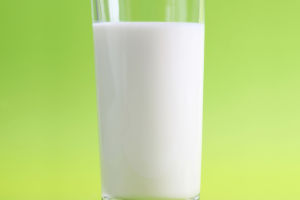Juice is a staple in many people's daily lives, whether it's homemade, ordered at a restaurant, or purchased at a supermarket.
This refreshing beverage plays a significant role in our diet, offering a wide range of flavors and nutritional benefits depending on the fruits used.
There are countless varieties of juice, each offering unique tastes and nutritional profiles. People are attracted to juice not just for its delicious taste but also for its perceived health benefits. In today’s society, juice has become a symbol of both fashion and health.
The process of making juice is relatively straightforward, yet it is crucial in determining the quality and flavor of the final product. The first and most important step is selecting fresh and ripe fruits. The quality of the fruit directly impacts the taste and nutritional content of the juice.
Once selected, the fruit should be thoroughly washed to remove surface dirt and pesticide residues. For fruits like oranges and lemons, peeling is often necessary to prevent bitterness from affecting the juice's flavor.
The fruit is then juiced using a juicer or by manual squeezing. To obtain a purer juice, it is usually necessary to filter out the pulp and seeds using a fine strainer. Finally, the filtered juice is bottled and sealed; it can be consumed immediately or refrigerated to extend its shelf life.
The nutritional value of juice is primarily derived from its rich content of vitamins, minerals, and antioxidants, particularly vitamin C and potassium. Different fruits offer varying nutrients. For example, orange juice is an excellent source of vitamin C, which supports the immune system.
Apple juice is rich in dietary fiber, which aids digestion. Carrot juice, on the other hand, is high in vitamin A, which is essential for good vision. Additionally, the natural sugars in juice can quickly replenish the body’s energy levels. However, there are potential health risks associated with juice consumption.
Despite its nutrient content, juice is often high in sugar, especially commercially available varieties that may contain added sugars and sweeteners to enhance flavor.
Excessive sugar intake can lead to weight gain, elevated blood sugar levels, and an increased risk of developing diabetes. Therefore, opting for pure juice without added sugars or making juice at home is a healthier choice.
As awareness of health and wellness continues to grow, the juice market has evolved accordingly. In recent years, pure, natural, and additive-free juices have gained popularity among consumers.
Cold-pressed and low-temperature pasteurized juices are becoming increasingly popular because they better retain the nutrients in fruits. Many juice brands have shifted their focus toward health-conscious consumers, launching new products such as organic juices and functional juices to cater to diverse needs.
The market has also seen innovation in packaging. In addition to traditional bottled juices, there are now smaller, portable juice products that are easy to carry and suitable for various occasions.
The combination of juice with other beverages has also become a trend. For instance, mixing juice with tea or plant-based milk has introduced new flavors and added health benefits for consumers.
While juice can play an important role in a healthy diet, it should not completely replace fresh fruit. This is because some dietary fiber is lost during the juicing process, and fiber is crucial for digestive health and blood sugar regulation.
Nutritionists recommend that, in addition to drinking juice, people should continue to consume whole fruits to obtain a full range of nutrients. For those managing weight or blood sugar, it is especially important to consume juice in moderation.
It is generally recommended that daily juice intake should not exceed one cup (approximately 240 ml), and whenever possible, pure juice without added sugars should be chosen. Diluting juice with water or sparkling water is also an effective way to reduce sugar intake.
As a convenient and tasty beverage, juice offers a wealth of nutritional benefits, but it also comes with some health risks. Consuming juice in moderation can provide essential vitamins and minerals, but it should be complemented with whole fruits to ensure adequate intake of dietary fiber and other nutrients.
With the growing awareness of health among consumers and ongoing market innovations, the juice industry is likely to develop in a healthier, more environmentally friendly, and diversified direction.


